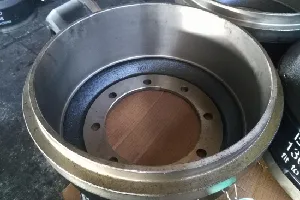
-
 Afrikaans
Afrikaans -
 Albanian
Albanian -
 Amharic
Amharic -
 Arabic
Arabic -
 Armenian
Armenian -
 Azerbaijani
Azerbaijani -
 Basque
Basque -
 Belarusian
Belarusian -
 Bengali
Bengali -
 Bosnian
Bosnian -
 Bulgarian
Bulgarian -
 Catalan
Catalan -
 Cebuano
Cebuano -
 Corsican
Corsican -
 Croatian
Croatian -
 Czech
Czech -
 Danish
Danish -
 Dutch
Dutch -
 ភាសាអង់គ្លេស
ភាសាអង់គ្លេស -
 Esperanto
Esperanto -
 Estonian
Estonian -
 Finnish
Finnish -
 French
French -
 Frisian
Frisian -
 Galician
Galician -
 Georgian
Georgian -
 German
German -
 Greek
Greek -
 Gujarati
Gujarati -
 Haitian Creole
Haitian Creole -
 hausa
hausa -
 hawaiian
hawaiian -
 Hebrew
Hebrew -
 Hindi
Hindi -
 Miao
Miao -
 Hungarian
Hungarian -
 Icelandic
Icelandic -
 igbo
igbo -
 Indonesian
Indonesian -
 irish
irish -
 Italian
Italian -
 Japanese
Japanese -
 Javanese
Javanese -
 Kannada
Kannada -
 kazakh
kazakh -
 Khmer
Khmer -
 Rwandese
Rwandese -
 Korean
Korean -
 Kurdish
Kurdish -
 Kyrgyz
Kyrgyz -
 Lao
Lao -
 Latin
Latin -
 Latvian
Latvian -
 Lithuanian
Lithuanian -
 Luxembourgish
Luxembourgish -
 Macedonian
Macedonian -
 Malgashi
Malgashi -
 Malay
Malay -
 Malayalam
Malayalam -
 Maltese
Maltese -
 Maori
Maori -
 Marathi
Marathi -
 Mongolian
Mongolian -
 Myanmar
Myanmar -
 Nepali
Nepali -
 Norwegian
Norwegian -
 Norwegian
Norwegian -
 Occitan
Occitan -
 Pashto
Pashto -
 Persian
Persian -
 Polish
Polish -
 Portuguese
Portuguese -
 Punjabi
Punjabi -
 Romanian
Romanian -
 Russian
Russian -
 Samoan
Samoan -
 Scottish Gaelic
Scottish Gaelic -
 Serbian
Serbian -
 Sesotho
Sesotho -
 Shona
Shona -
 Sindhi
Sindhi -
 Sinhala
Sinhala -
 Slovak
Slovak -
 Slovenian
Slovenian -
 Somali
Somali -
 Spanish
Spanish -
 Sundanese
Sundanese -
 Swahili
Swahili -
 Swedish
Swedish -
 Tagalog
Tagalog -
 Tajik
Tajik -
 Tamil
Tamil -
 Tatar
Tatar -
 Telugu
Telugu -
 Thai
Thai -
 Turkish
Turkish -
 Turkmen
Turkmen -
 Ukrainian
Ukrainian -
 Urdu
Urdu -
 Uighur
Uighur -
 Uzbek
Uzbek -
 Vietnamese
Vietnamese -
 Welsh
Welsh -
 Bantu
Bantu -
 Yiddish
Yiddish -
 Yoruba
Yoruba -
 Zulu
Zulu
កុម្ភៈ . 16, 2025 12:24
ត្រឡប់ទៅបញ្ជី
drum brakes stuck engaged
Encountering drum brakes that are stuck engaged can be a perplexing problem for vehicle owners. This issue not only compromises your driving experience but can also pose significant safety risks. Understanding the intricacies of drum brakes and knowing how to address the situation effectively is crucial.
Upon removing the drum, inspect the internal components for signs of wear, corrosion, or damage. If rust is present, use a wire brush to clean the internal surfaces. Pay particular attention to the wheel cylinder; test its movement by pressing gently on the pushrods. If the cylinder doesn't move, it might be seized and may require replacement. Adjusting the brake shoes is another critical step. Apply the correct manual adjustment by using the star wheel adjuster, typically located behind the drum assembly. Turn the adjuster slowly to move the brake shoes inward, and ensure that the drum can be placed back onto the hub without excess resistance. Once reassembled, test the wheel for any resistance by spinning it by hand. Ensure that it rotates freely without dragging. Finally, reconnect everything, lower the vehicle, and test-drive under controlled conditions. Ensure the brakes engage and disengage correctly without dragging or any unusual noises. Professionals suggest routine maintenance as an authoritative measure to prevent such issues. Regularly inspecting and cleaning brake components, particularly after exposure to corrosive environmental conditions, enhances longevity and performance. This proactive approach, backed by expertise and experience, assures trustworthiness and reliability in the drum brake system. Solving drum brakes stuck engaged might seem intricate, but with thoughtful intervention and an understanding of the root causes, it’s possible to resolve safely and effectively. These measures not only restore function but ensure your vehicle remains safe to operate, reflecting the importance of maintaining this crucial system.


Upon removing the drum, inspect the internal components for signs of wear, corrosion, or damage. If rust is present, use a wire brush to clean the internal surfaces. Pay particular attention to the wheel cylinder; test its movement by pressing gently on the pushrods. If the cylinder doesn't move, it might be seized and may require replacement. Adjusting the brake shoes is another critical step. Apply the correct manual adjustment by using the star wheel adjuster, typically located behind the drum assembly. Turn the adjuster slowly to move the brake shoes inward, and ensure that the drum can be placed back onto the hub without excess resistance. Once reassembled, test the wheel for any resistance by spinning it by hand. Ensure that it rotates freely without dragging. Finally, reconnect everything, lower the vehicle, and test-drive under controlled conditions. Ensure the brakes engage and disengage correctly without dragging or any unusual noises. Professionals suggest routine maintenance as an authoritative measure to prevent such issues. Regularly inspecting and cleaning brake components, particularly after exposure to corrosive environmental conditions, enhances longevity and performance. This proactive approach, backed by expertise and experience, assures trustworthiness and reliability in the drum brake system. Solving drum brakes stuck engaged might seem intricate, but with thoughtful intervention and an understanding of the root causes, it’s possible to resolve safely and effectively. These measures not only restore function but ensure your vehicle remains safe to operate, reflecting the importance of maintaining this crucial system.
មុន៖
បន្ទាប់៖
ព័ត៌មានចុងក្រោយ
-
What Are Drum Brakesព័ត៌មានJul.07,2025
-
Understanding Brake Drum Materialព័ត៌មានJul.07,2025
-
Semi-Trailer Brake Drum: A Key Component for Extreme Loads and Long-Distance Transportព័ត៌មានJul.07,2025
-
Drum Brake Pads for Saleព័ត៌មានJul.07,2025
-
Brake Drums for Saleព័ត៌មានJul.07,2025
-
Brake Drum Manufacturerព័ត៌មានJul.07,2025
-
Aluminum Brake Drums: The Future of High-Performance Carsព័ត៌មានJul.07,2025
